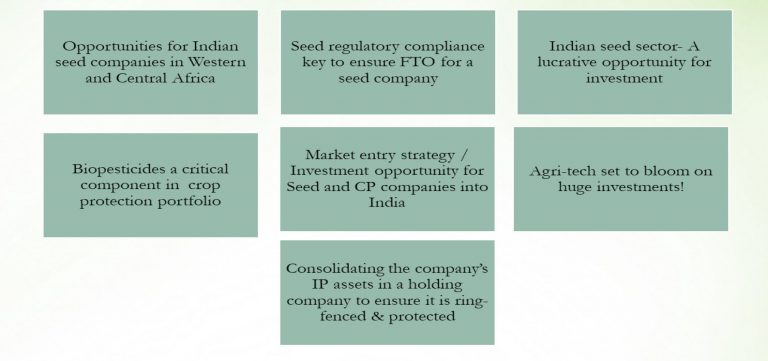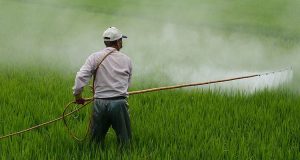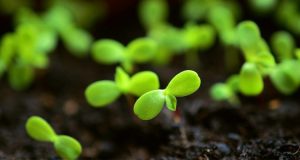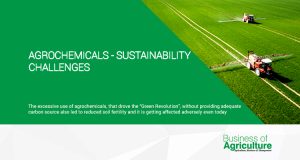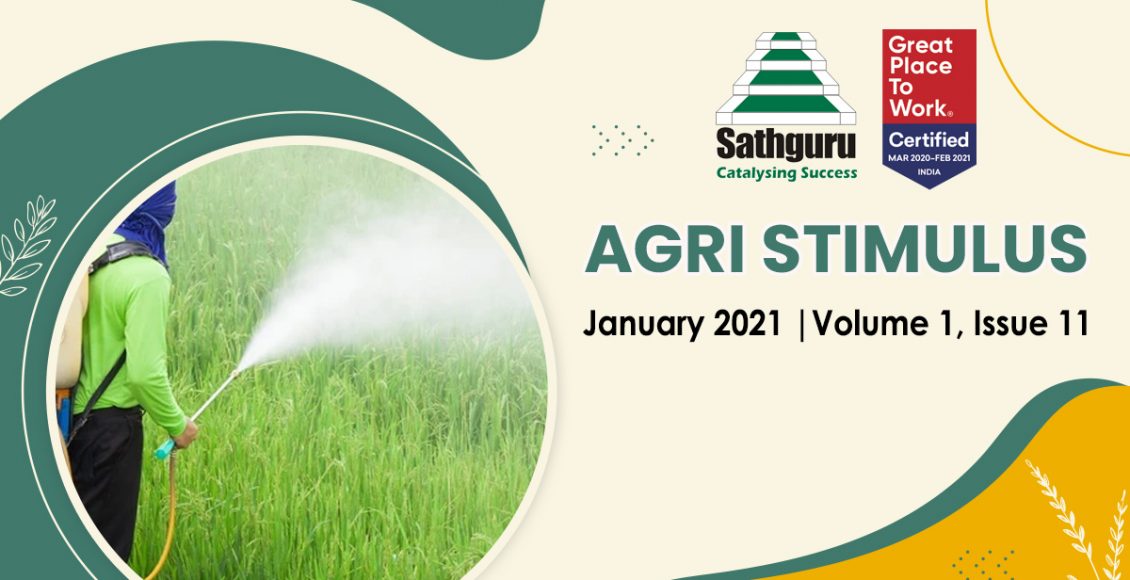
Opportunity for India becoming a global agro-chemical manufacturing hub
Role of CRAMS in Evolving Agrochemical Industry
Industry’s view on changing dynamics of Indian agrochemical sector
Agriculture continue to remain central to the Indian economy, contributing nearly 18% to our GDP.  In India more than 50% of the population still depends on Agriculture for livelihood. As a result, a sectors like seeds, fertilizers, agrochemicals have a far reaching impact on Indian economy, driven by major government interventions and actions.
In India more than 50% of the population still depends on Agriculture for livelihood. As a result, a sectors like seeds, fertilizers, agrochemicals have a far reaching impact on Indian economy, driven by major government interventions and actions.
Indian agriculture sector faces some of the unique challenge like monsoon dependency, low productivity, lack of awareness of input use, low arable land, declining soil fertility, water scarcity and high post-harvest loss. Every year around 20% of crop output is lost due to attacks by weeds, diseases and pests worth INR 45,000 crores. Population of India is currently at 1.3 billion and is likely to rise to 1.7 billion by 2050. With the growing population, India will not only have to raise its agricultural production, but also the productivity to ensure its food and nutrition security. For sustainable agriculture, efficient use of crop protection solutions plays vital importance.
Indian crop protection industry is 4th largest in the world with a value of ₹40,000 crore divided almost equally, between India’s domestic consumption and exports. But in spite of its huge market, agrochemical consumption per hectare amounts to 0.6kg /ha, that is significantly low as compared to global norms. Insecticides dominate the crop protection industry in India with about 50 per cent market share followed by herbicides & fungicides. One of the factor for low yield per hectare is attributed to inadequate crop protection measures. Increasing population and everincreasing demand for food necessitate the use of agrochemicals to increase the productivity.
With increase in awareness regarding environment conservation, the industry has also introduced various eco-friendly pest management products. The industry has been educating consumers that all chemicals are not harmful and also working on increasing awareness about judicious use of chemicals and good agricultural practices (GAP) at the farmers level.
Due to low level of agro chemical consumption in India as compared to global norms, agro chemical industry has huge unrealized potential for growth. Besides increasing in domestic consumption, the exports by the Indian Agrochemicals Industry can be doubled in the next four years if the right strategies and technologies are adopted by the industry. The role of agrochemicals in achieving the vision of USD 5 trillion economy by 2025 cannot be undermined, as it not only ensures food security, provides livelihoods but also provides impetus to the growth of industries and service sectors. One of the key challenges for many companies is high R&D cost, as it takes 8-10 years to develop a new molecule and is also very expensive affair. Many companies in India typically have not focused on developing newer molecules and are facing challenges in building these capabilities, while continuing to remain cost competitive. Govt intervention in the area of improving certain infrastructures like pesticides testing laboratories, improving sampling process, strengthening of registration and importing process will boost the right investment and also help in the growth of agrochemical industry.
- Factors providing impetus for the seed industry
- Remodeling the agro chemical industry
- The Agritech way– digitizing the agri value chain
Paddy procurement reaches 487.92 lakh tonnes for Kharif marketing season :
Food Corporation of India (FCI) and the state agencies have purchased 487.92 lakh tonnes of paddy worth Rs 92,121 crore so far in the ongoing Kharif marketing season with Punjab contributing 41.55 per cent of total procurement. 62.28 lakh farmers have been benefitted from the ongoing KMS procurement operations.
Read More
Strategic collaboration between Heliae and Rizobacter to improve crop health:
The strategic collaboration between Heliae® Agriculture and Rizobacter, a subsidiary of Bioceres Crop Solutions Corp., will enable merger of comprehensive biological solutions into products and technologies driving higher yields in farmers’ fields. Integration of these two businesses will allow improvement in soil health and improvement in crop performance and health.
Read More
‘Crop Darpan’ set to replace field-level agri expert :
The ‘Crop Darpan’ app developed by Indian Institute of Information Technology (IIIT-Hyderabad) assists farmers in getting instant prescription for their crops infested with pests or disease. The app currently available in two languages offers solutions for all diseases and challenges related to cotton.
Read More
Potato production likely to be higher in Bengal and UP:
Increase in the area under cultivation and better yields are likely to boost potato production in the key growing states of UP, Punjab and West Bengal. The exact increase in production can be estimated by the end of January as harvesting is yet to happen in many growing regions.
Read More
Farmers Market established by Producer Corporation to promote their produce:
First of its kind farmer’s market set up with the support of 35 Farmers Producer Companies (FPCs) in Satara district of Maharashtra to advertise and sell the produce under one roof. Everything from greens to food grains will be sold here.
Read More
Normalization of demand leads to inflation in food:
As most of the countries are moving towards normalization in demand, food inflation has been observed owing to stock piling by China, pandemic uncertainties, easy liquidity and very low global interest rates. The food Price Index has risen to a six year high in December.
Read More
Surge in India’s Basmati rice exports to European Countries:
Rising demand for basmati rice in Belgium and Netherlands has resulted in a better price realisation for farmers from the basmati rice-growing areas in Punjab and Haryana. India’s Basmati exports to Belgium have increased 60% in the first eight months of the current financial year, while imports by the Netherlands have almost doubled. The export quality variety 1121 Pusa, has been fetching a 15 % higher price at the farmgate.
Read More
Respite for consumers with record harvest of food grains:
Record harvest of pulses, grains and edible oil this winter season likely to drag prices down by 10-15%. The crop area of oil seeds and pulses have gone up by 6.16 % and 4.67 % respectively over last year indicating a better output of these commodities. Moderate rains in wheat, mustard and pulses growing areas have raised hopes for bumper harvest.
Read More
Wheat sowing touches 325.35 lakh hectares this Rabi season:
Wheat sowing has increased by 4 % to 325.35 lakh hectare compared to 313.95 lakh hectare in the same period last year contributed mainly from Madhya Pradesh, Bihar and Maharashtra. There was an increase in the acreage of pulses too by 5 % to 154.8 lakh hectares.
Read More
Click here to Download the PDF version
Authors





Connect with Authors at: E-mail agribusiness@sathguru.com
 Grow Beyond
Grow Beyond 
